Mirago S 25 Tablet 10's
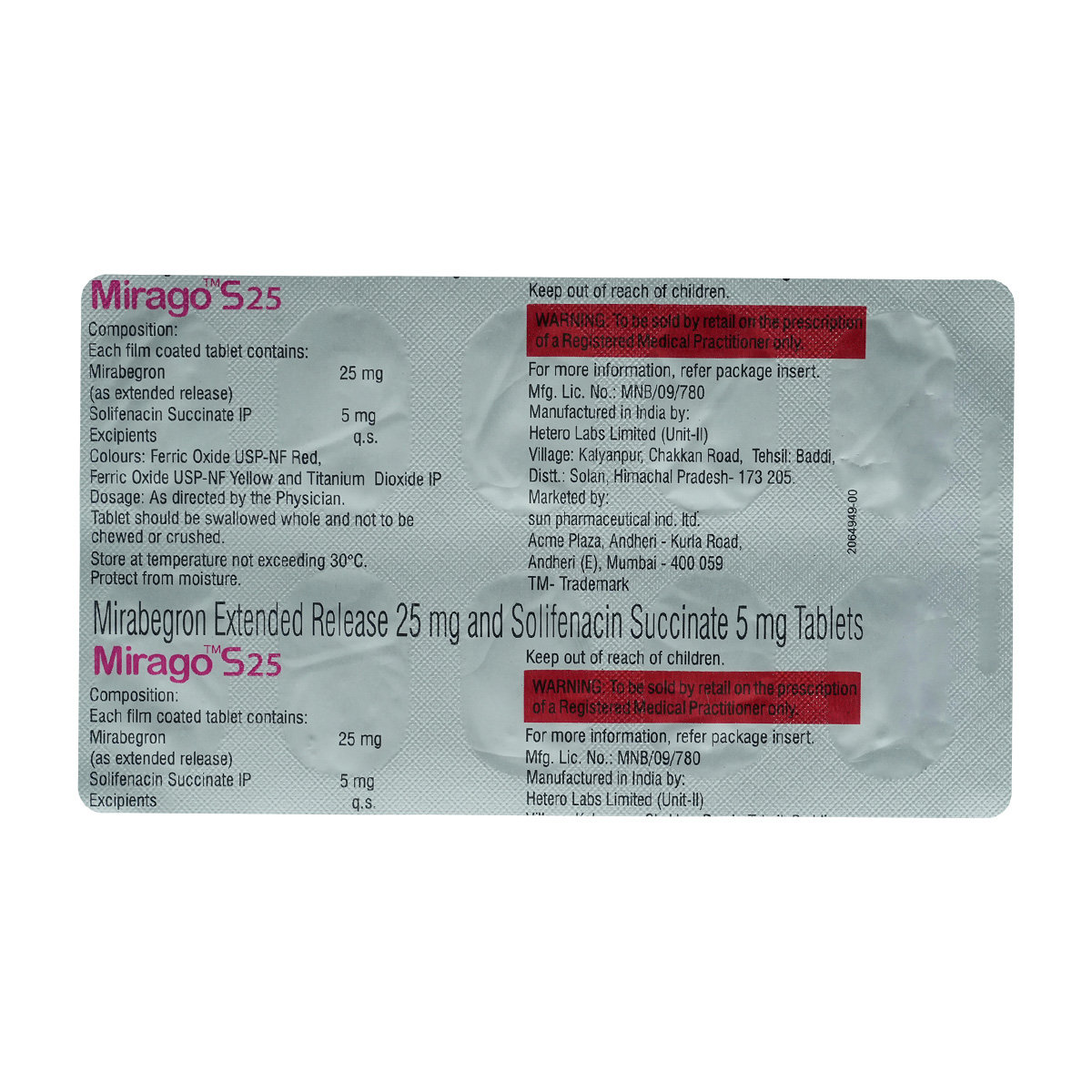
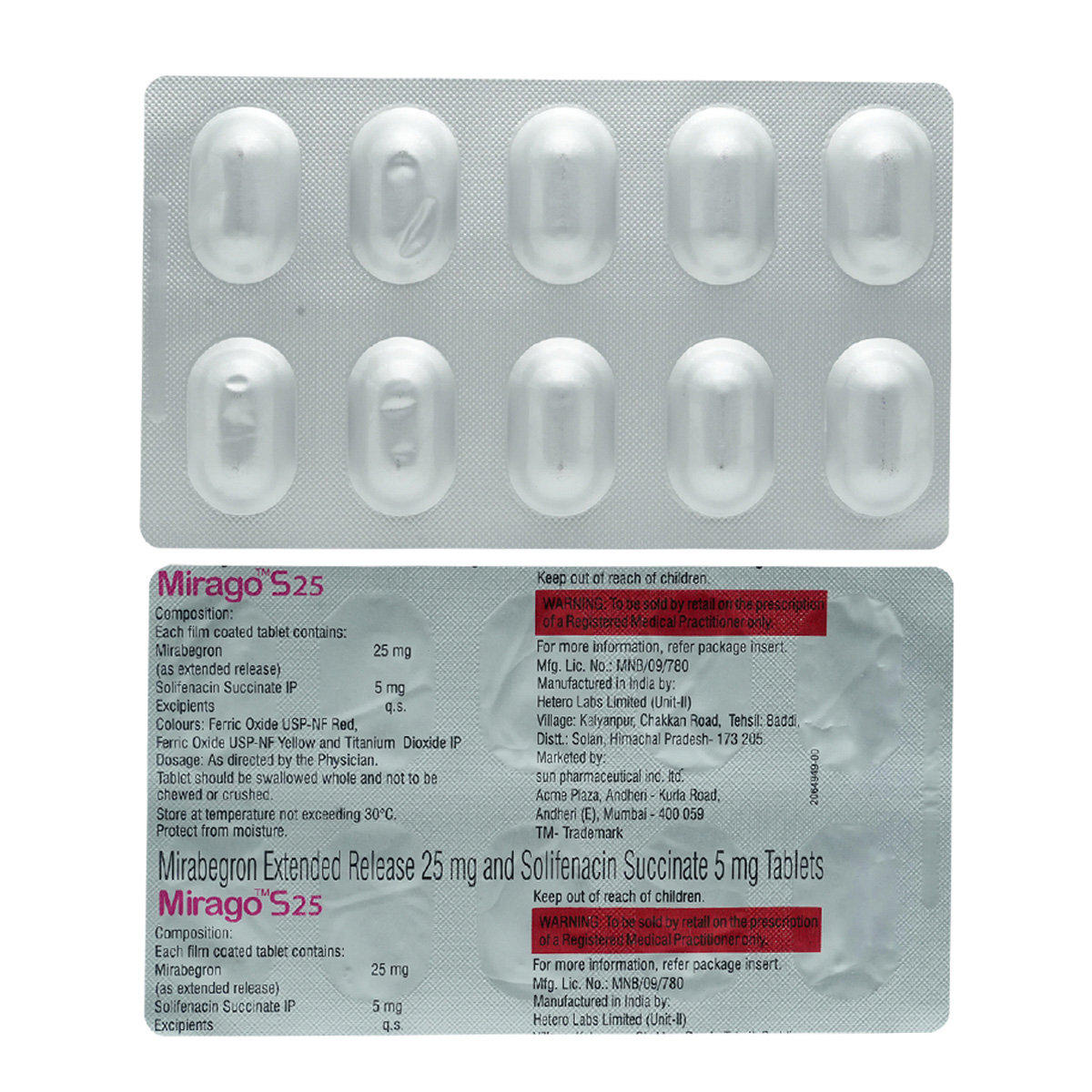
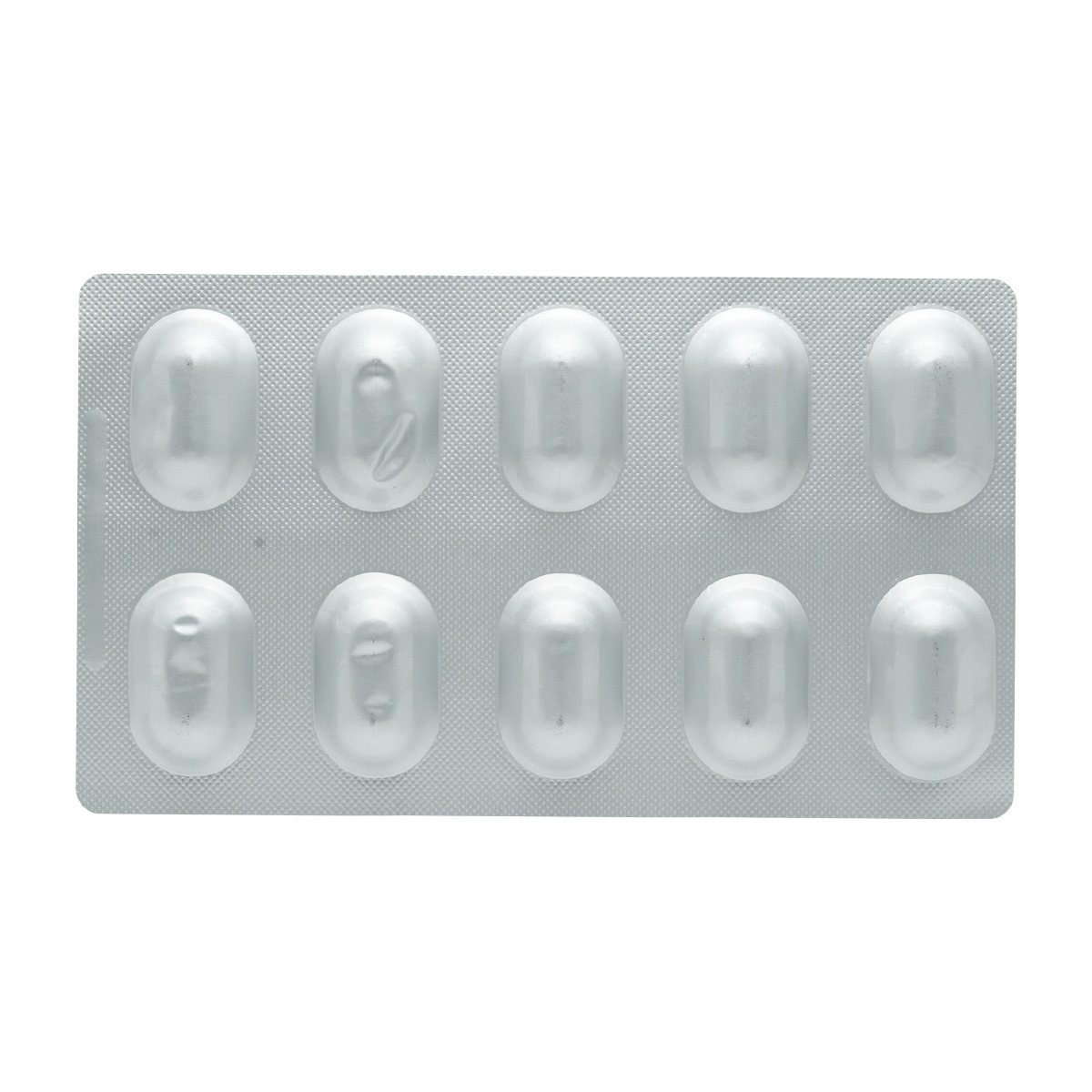



MRP ₹421.5
(Inclusive of all Taxes)
₹63.2 Cashback (15%)
Provide Delivery Location
Online payment accepted
 Prescription drug
Prescription drugWhats That
Composition :
Manufacturer/Marketer :
Consume Type :
Expires on or after :
Return Policy :
About Mirago S 25 Tablet
Mirago S 25 Tablet is a combination medicine used to treat overactive bladder (OAB) with symptoms of urinary incontinence (urine leakage), urgent or frequent urination, increased night-time urination, and dysuria (painful or difficult urination). Overactive bladder is a condition in which there is a problem with bladder function, which causes a sudden urge to urinate that might be difficult to control.
Mirago S 25 Tablet contains Solifenacin (anti-cholinergic) and Mirabegron (beta-3 adrenergic agonist). Solifenacin reduces the undesirable contractions of the bladder, thereby increasing the amount of urine that the bladder can hold. This decreases the urgency for urination. Mirabegron relaxes the muscles of the bladder; this prevents frequent, uncontrolled, or urgent urination. Together, Mirago S 25 Tablet helps in treating overactive bladder.
You are advised to take Mirago S 25 Tablet for as long as your doctor has prescribed it for you, depending on your medical condition. In some cases, you may experience common side-effects such as dry mouth, constipation, headache, high blood pressure, and vomiting. Most of these side effects do not require medical attention and will resolve gradually over time. However, you are advised to talk to your doctor if you experience these side effects persistently.
Consult your doctor if you are pregnant or breastfeeding. Mirago S 25 Tablet is not recommended for children as safety and efficacy have not been established. Mirago S 25 Tablet may cause blurred vision, so drive with caution. Avoid or limit alcohol consumption along with Mirago S 25 Tablet as it could lead to increased dizziness. Inform your doctor about your health condition and medications before taking Mirago S 25 Tablet to rule out any side effects/interactions.
Uses of Mirago S 25 Tablet
Directions for Use
Key Benefits
Mirago S 25 Tablet is a combination of two drugs, namely: Solifenacin and Mirabegron. Mirago S 25 Tablet is a combination medicine used to treat overactive bladder (OAB) with symptoms of urinary incontinence (urine leakage), urgent or frequent urination, increased night-time urination, dysuria (painful or difficult urination). Solifenacin is an anti-cholinergic that reduces the undesirable contractions of the bladder, thereby increasing the amount of urine that the bladder can hold. This decreases the urgency for urination. Mirabegron is a beta-3 adrenergic agonist which relaxes the muscles of the bladder; this prevents frequent, uncontrolled, or urgent urination. Together, Mirago S 25 Tablet helps in treating an overactive bladder.
Storage
- Inform your doctor about the medication you're taking and the UTI symptoms you're experiencing.
- Your doctor may adjust your medication regimen or consider alternative medications or dosages that may reduce the risk of UTIs.
- Drink plenty of water (at least 8-10 glasses a day) to help flush out bacteria. Avoid sugary drinks and caffeine, which can exacerbate UTI symptoms.
- Urinate when you feel the need rather than holding it in. This can help prevent bacterial growth and reduce the risk of UTIs.
- Consider cranberry supplements: Cranberry supplements may help prevent UTIs by preventing bacterial adhesion.
- Monitor UTI symptoms and report any changes to your doctor.
- If antibiotics are prescribed, take them as directed and complete the full course.
- Contact your doctor immediately if you're experiencing a fast heart rate, palpitations, or other heart-related symptoms. This is crucial to determine whether the symptoms are related to your medication.
- Your doctor may need to adjust your medication regimen to alleviate the fast heart rate symptoms. This could involve changing the medication, reducing the dosage, or adding new medications to counteract the side effects.
- Follow your doctor's advice on monitoring your heart rate and blood pressure. This will help track any changes and ensure your heart rate returns normal.
- If you experience severe symptoms such as chest pain, dizziness, or shortness of breath, seek immediate medical attention. These symptoms can indicate a more serious condition that requires prompt treatment.
- Inform your doctor about the nausea and discuss possible alternatives to the medication or adjustments to the dosage.
- Divide your daily food intake into smaller, more frequent meals to reduce nausea.
- Opt for bland, easily digestible foods like crackers, toast, plain rice, bananas, and applesauce.
- Avoid certain foods that can trigger nausea, such as fatty, greasy, spicy, and smelly foods.
- Drink plenty of fluids, such as water, clear broth, or electrolyte-rich beverages like coconut water or sports drinks.
- Use ginger (tea, ale, or candies) to help relieve nausea.
- Get adequate rest and also avoid strenuous activities that can worsen nausea.
- Talk to your doctor about taking anti-nausea medication if your nausea is severe.
- Record when your nausea occurs, what triggers it, and what provides relief to help you identify patterns and manage your symptoms more effectively.
- Inform Your Doctor: Notify your doctor immediately about your diarrhoea symptoms. This allows them to adjust your medication or provide guidance on managing side effects.
- Stay Hydrated: Drink plenty of fluids to replace lost water and electrolytes. Choose water, clear broth, and electrolyte-rich drinks. Avoid carbonated or caffeinated beverages to effectively rehydrate your body.
- Follow a Bland Diet: Eat easy-to-digest foods to help firm up your stool and settle your stomach. Try incorporating bananas, rice, applesauce, toast, plain crackers, and boiled vegetables into your diet.
- Avoid Trigger Foods: Steer clear of foods that can worsen diarrhoea, such as spicy, fatty, or greasy foods, high-fibre foods, and dairy products (especially if you're lactose intolerant).
- Practice Good Hygiene: Maintain good hygiene to prevent the spread of infection. To stay healthy, wash your hands frequently, clean and disinfect surfaces regularly, and avoid exchanging personal belongings with others.
- Take Anti-Diarrheal Medications: If your doctor advises, anti-diarrheal medications such as loperamide might help manage diarrhoea symptoms. Always follow your doctor's directions.
- Keep track of your diarrhoea symptoms. If they don't get better or worse or are accompanied by severe stomach pain, blood, or dehydration signs (like extreme thirst or dark urine), seek medical help.
- Inform your doctor about your constipation symptoms. They may adjust your medication or advise alternative treatments.
- Stay hydrated by drinking sufficient of water (at least 8-10 glasses a day) to help soften stool and promote bowel movements.
- Increase fibre intake by eating foods high in fibre, such as fruits, whole grains, vegetables and legumes, to help bulk up the stool.
- Establish a bowel routine by trying to go to the bathroom at the same time each day to train your bowels.
- Engaging in regular exercise, like walking or yoga, can support in bowel movement stimulation.
- Consult your doctor if constipation persists, and discuss alternative treatments or adjustments to your medication.
- Hydrate your body: Drink enough water to prevent dehydration and headaches.
- Calm Your Mind: Deep breathing and meditation can help you relax and relieve stress.
- Rest and Recharge: Sleep for 7-8 hours to reduce headache triggers.
- Take rest: lie down in a quiet, dark environment.
- Cold or warm compresses can help reduce tension.
- Stay Upright: Maintain good posture to keep symptoms from getting worse.
- To treat headaches naturally, try acupuncture or massage therapy.
- Over-the-counter pain relievers include acetaminophen and ibuprofen.
- Prescription Assistance: Speak with your doctor about more substantial drug alternatives.
- Severe Headaches: Seek emergency medical assistance for sudden, severe headaches.
- Frequent Headaches: If you get reoccurring headaches, consult your doctor.
- Headaches with Symptoms: Seek medical attention if your headaches include fever, disorientation, or weakness.
- Inform your doctor about dizziness symptoms. They may adjust your medication regimen or prescribe additional medications to manage symptoms.
- Follow your doctor's instructions for taking medication, and take it at the same time every day to minimize dizziness.
- When standing up, do so slowly and carefully to avoid sudden dizziness.
- Avoid making sudden movements, such as turning or bending quickly, which can exacerbate dizziness.
- Drink plenty of water throughout the day to stay hydrated and help alleviate dizziness symptoms.
- If you're feeling dizzy, sit or lie down and rest until the dizziness passes.
- Track when dizziness occurs and any factors that may trigger it, and share this information with your doctor to help manage symptoms.
Drug Warnings
Do not take Mirago S 25 Tablet if you are allergic to any of its contents. Inform your doctor if you have glaucoma, myasthenia gravis, ulcerative colitis, urinary retention, high blood pressure, angioedema, kidney or liver problems. Consult your doctor if you are pregnant or breastfeeding. Mirago S 25 Tablet is not recommended for children. Mirago S 25 Tablet may cause blurred vision, so drive with caution. Avoid or limit alcohol consumption with Mirago S 25 Tablet as it could lead to increased dizziness.
Drug-Drug Interactions
Drug-Drug Interactions
Login/Sign Up
Coadministration of Eliglustat and Mirago S 25mg Tab can significantly increase the blood levels of eliglustat. This can increase the risk or severity of side effects.
How to manage the interaction:
Taking Mirago S 25mg Tab with Eliglustat is not recommended, it should be taken only when advised by a doctor. You should seek immediate medical help if you develop symptoms like sudden dizziness, lightheadedness, fainting, shortness of breath, irregular heart rate, weak pulse, or heart palpitations. Do not discontinue any medications without a doctor's advice.
Using Mesoridazine together with Mirago S 25mg Tab can increase the risk of an irregular heart rhythm.
How to manage the interaction:
Taking Mesoridazine with Mirago S 25mg Tab is not recommended, please consult your doctor before taking it. You should seek immediate medical attention if you develop sudden dizziness, lightheadedness, fainting, shortness of breath, or heart palpitations call a doctor.
Taking Mirago S 25mg Tab and Potassium chloride together can increase the risk of stomach ulcers, bleeding, and stomach injury.
How to manage the interaction:
Taking Mirago S 25mg Tab with Potassium chloride is not recommended, as it can lead to an interaction, it can be taken if a doctor has prescribed it. However, if you experience severe stomach pain, bloating, sudden lightheadedness or dizziness, nausea, vomiting (especially with blood), decreased hunger, dark, tarry stools, consult the doctor immediately. Do not discontinue any medications without a doctor's advice.
The blood levels and effects of Mirago S 25mg Tab may be greatly increased when combined with itraconazole.
How to manage the interaction:
Mirago S 25mg Tab and Itraconazole may interact, however, if recommended by a physician, they are safe to consume. Consult a doctor if you feel sleepy, or uneasy, have an irregular heartbeat, have blurry vision, have trouble urinating, have a dry mouth, a headache, have digestive problems, or have constipation. Without consulting a doctor, never stop taking any medication.
Combined use of Mirago S 25mg Tab and Pimozide may increase the level of pimozide in the blood. This can increase the risk or severity of irregular heart rhythms.
How to manage the interaction:
Taking Mirago S 25mg Tab and Pimozide may lead to an interaction but they can be taken together if your doctor has prescribed them. However, if you experience drowsiness, blurred vision, dry mouth, constipation, low blood pressure, tremors, trembling of hands, arms, legs, jaw and face, balance and Speech difficulty, or abnormal muscle movements consult a doctor. Do not discontinue any medications without consulting a doctor.
Coadministration of Mirago S 25mg Tab and Venetoclax may significantly increase the blood levels and effects of Venetoclax. This can increase the risk or severity of side effects.
How to manage the interaction:
There may be a possible interaction between Mirago S 25mg Tab and Venetoclax, but they can be taken together if your doctor has prescribed them. However, if you experience nausea, vomiting, diarrhea, fatigue, fever, chills, bleeding problems, sudden dizziness, lightheadedness, fainting, shortness of breath, or rapid heartbeat, contact a doctor immediately. Do not discontinue any medications without consulting a doctor.
Combine use of Mirago S 25mg Tab and thioridazine may raise the blood levels of thioridazine. This can increase the risk or severity of side effects.
How to manage the interaction:
Taking Mirago S 25mg Tab and thioridazine together can possibly result in an interaction, it can be taken if your doctor has advised it. However, if you experience stomach pain, diarrhea, dehydration, sudden dizziness, lightheadedness, fainting, shortness of breath, or rapid heartbeat, contact a doctor immediately. Do not discontinue any medications without consulting a doctor.
Coadministration of Mirago S 25mg Tab and Tamoxifen may reduce the effects of tamoxifen.
How to manage the interaction:
Taking Mirago S 25mg Tab and Tamoxifen together can possibly result in an interaction, it can be taken if your doctor has advised it. However, if you experience painful urination, constipation, dry mouth, headache, sudden dizziness, lightheadedness, fainting, shortness of breath, or rapid heartbeat, contact a doctor immediately. Do not discontinue any medications without consulting a doctor.
Combining Aripiprazole with Mirago S 25mg Tab can increase the levels of Aripiprazole in the body. This can lead to increased risk or severity of side effects.
How to manage the interaction:
Although taking Mirago S 25mg Tab and Aripiprazole together can cause an interaction, it can be taken if a doctor has suggested it. If you notice any of these signs like feeling sleepy, having seizures, unusual muscle movements, low blood pressure, feeling confused, muscle spasms, twitching in your jaw, shaking or jerking in your arms and legs, feeling nervous or restless, dizziness, lightheaded, or fainting contact the doctor right away. Do not stop using any medications without a doctor's advice.
A combined use of Mirago S 25mg Tab and Brexpiprazole may increase the level of Brexpiprazole in blood. This can increase the risk or severity of side effects.
How to manage the interaction:
There could be a possible interaction between Mirago S 25mg Tab and Brexpipraole, it can be taken together if your doctor has advised them. However, if you experience drowsiness, fatigue, seizure, chest pain or tightness, irregular heart rates, fever, excessive sweating, shivering or shaking, blurred vision, muscle spasm or stiffness, tremors, incoordination, stomach cramp, nausea, vomiting, and diarrhea contact a doctor immediately. Do not discontinue any medications without consulting a doctor.
Drug-Food Interactions
Drug-Food Interactions
Login/Sign Up
Diet & Lifestyle Advise
- Pelvic floor exercises would be helpful in treating bladder spasms.
- Avoid foods like sugars, carbonated beverages, tea, citrus fruits, tomatoes, spicy foods, chocolate and tea.
- Avoid drinking excess alcohol or caffeinated drinks, as they can worsen the symptoms.
- Maintain a healthy weight, and exercise regularly.
- Quit smoking.
- Take 6-8glasses of liquids every day.
- Avoid processed foods. Instead, choose whole, unprocessed foods.
- Include fruits, vegetables, and fibre-rich food in your diet.
Side Effects of Mirago S 25 Tablet
- Constipation
- Headache
- Dry mouth
- Blurred vision
- Vomiting
- High blood pressure
- Urinary tract infection
Habit Forming
Therapeutic Class
All Substitutes & Brand Comparisons
RX
Urihold S 25 Tablet 10's
Aristo Pharmaceuticals Pvt Ltd
₹168.5
(₹16.85 per unit)
55% CHEAPERRX
Out of StockSoliact M 25 Tablet 10's
Cipla Ltd
₹257.5
(₹23.18 per unit)
38% CHEAPERRX
Exena-S 25/5 Tablet 10's
Dr Reddy's Laboratories Ltd
₹283.5
(₹25.52 per unit)
32% CHEAPER
Product Substitutes
Author Details
We provide you with authentic, trustworthy and relevant information
Drug-Diseases Interactions
Drug-Diseases Interactions
Login/Sign Up
FAQs
Mirago S 25 Tablet contains Solifenacin and Mirabegron. Solifenacin reduces the undesirable contractions of the bladder, thereby increasing the amount of urine that the bladder can hold. This decreases the urgency for urination. Mirabegron relaxes the muscles of the bladder; this prevents frequent, uncontrolled, or urgent urination. Together, Mirago S 25 Tablet helps in treating an overactive bladder.
There is some overlap between the symptoms of both OAB and BPH. OAB occurs due to uncontrolled urinary bladder muscle contractions. The main symptom of OAB is a sudden urge to urinate that's hard to control, which is stressful. On the other hand, BPH occurs due to an enlarged prostate gland, which puts pressure on the urinary bladder, thereby causing pain during urination.
Dry mouth could be a side effect of Mirago S 25 Tablet . Limiting caffeine intake, avoiding smoking and mouthwashes containing alcohol; drinking water regularly, and chewing sugar-free gum/candy might stimulate saliva and prevent drying of the mouth.
Mirago S 25 Tablet might cause hypertension. Therefore, consult your doctor before taking Mirago S 25 Tablet if you have high blood pressure.
Constipation could be a side-effect of Mirago S 25 Tablet . Eat fibre-rich food and drink plenty of fluids if you experience constipation. Talk to your doctor if you have severe constipation.
Drug-Drug Interactions Checker List
- DIPHENHYDRAMINE
- METOPROLOL
- ACETAMINOPHEN
- ALBUTEROL
Disease/Condition Glossary
Overactive bladder (OAB): Overactive bladder is a condition in which there is a problem with bladder function, which causes a sudden urge to urinate that might be difficult to control. The contraction or tightening of bladder muscles causes bladder spasms. Continuous contractions may cause an urge to urinate. Overactive bladder is characterised by involuntary leakage of urine, excessive urination, and urgent need to urinate. The common causes of bladder spasms are urinary tract infections, drinking too much caffeine or alcohol, diabetes, constipation, impaired kidney function, bladder stones, enlarged prostate, or neurological disorders. Symptoms of overactive bladder include urinating more than 8 times a day and more than 2 times at night, strong and sudden need to urinate, leakage of urine, and loss of bladder control.

Have a query?
Buy best Genito Urinary products by
Cipla Ltd
Sun Pharmaceutical Industries Ltd
Intas Pharmaceuticals Ltd
Ipca Laboratories Ltd
Leeford Healthcare Ltd
Dr Reddy's Laboratories Ltd
Lupin Ltd
Alkem Laboratories Ltd
Msn Laboratories Pvt Ltd
Zydus Healthcare Ltd
Demorbus India Pvt Ltd
Mankind Pharma Pvt Ltd
Overseas Health Care Pvt Ltd
RPG Life Sciences Ltd
La Renon Healthcare Pvt Ltd
Alembic Pharmaceuticals Ltd
Corona Remedies Pvt Ltd
Macleods Pharmaceuticals Ltd
Aristo Pharmaceuticals Pvt Ltd
Fourrts India Laboratories Pvt Ltd
Tas Med India Pvt Ltd
Micro Labs Ltd
Samarth Life Sciences Pvt Ltd
Zydus Cadila
Emcure Pharmaceuticals Ltd
Hetero Drugs Ltd
Ignyx Pharmaceuticals
Renspur Healthcare Pvt Ltd
Steris Healthcare
Alniche Life Sciences Pvt Ltd
Septalyst Lifesciences Pvt Ltd
Ajanta Pharma Ltd
Elder Pharmaceuticals Ltd
Merynova Life Sciences India Pvt Ltd
Tppl Pharmaceuticals Pvt Ltd
Walter Bushnell
Aar Ess Remedies Pvt Ltd
Knoll Healthcare Pvt Ltd
Lividus Pharmaceuticals Pvt Ltd
Meditrex Pharma
Medrhans Pharmaceuticals Pvt Ltd
Neuten HealthCare
Redmed Medical Services
Talohsty Medmark Pvt Ltd
Zycris Healthcare
East West Pharma India Pvt Ltd
Globus Remedies Ltd
Golden Square Lab Pvt Ltd
Hetero Healthcare Pvt Ltd
Modi Mundipharma Pvt Ltd
Nephurocare Pharma Pvt Ltd
Pfizer Ltd
TTK Healthcare Ltd
Votary Laboratories (India) Ltd
Albus Healthcare Pvt Ltd
Delvin Formulations (P) Ltd
Indoco Remedies Ltd
Intra Life Pvt Ltd
Megma Healthcare Pvt Ltd
Morepen Laboratories Ltd
Qren Life Sciences Pvt Ltd
Steadfast MediShield Pvt Ltd
Unipark Biotech Pvt Ltd
Akumentis Healthcare Ltd
Biokindle Lifesciences Pvt Ltd
Calren Care Lifesciences Pvt Ltd
Chemo Biological Ltd
Chemo Healthcare Pvt Ltd
Euniche Life Sciences
Himeros Pharmaceuticals Pvt Ltd
Hospimax Healthcare Pvt Ltd
Kiosence Health Care Pvt Ltd
Lia Life Sciences Pvt Ltd
Panacea Biotec Ltd
Primus Remedies Pvt Ltd
Rencord Life Sciences Pvt Ltd
Shilpa Medicare Ltd
Stadmed Pvt Ltd
Abbott India Ltd
Ameya Pharmaceuticals & Chemicals Pvt Ltd
Ardent Life Sciences Pvt Ltd
Asterima Pharmaceuticals Pvt Ltd
Astrum Healthcare Pvt Ltd
Cadila Healthcare Ltd
De Renon
Fibovil Pharmaceuticals Pvt Ltd
Koye Pharmaceuticals Pvt Ltd
Linux Laboratories Pvt Ltd
MMC Healthcare Ltd
Neovae Biomedics Pvt Ltd
Olcare Laboratories Pvt Ltd
Oxygen Pharma Care Pvt Ltd
Prevego Healthcare & Research Pvt Ltd
Rene Lifescience
Sanzyme Pvt Ltd
Solis Ortus Remedies Pvt Ltd
Syndicate Life Sciences Pvt Ltd
Tycoon Pharmaceuticals Pvt Ltd
Vasu Organics Pvt Ltd
Walron Health Care Pvt Ltd
Alcohol
Safe if prescribed
You are recommended to avoid or limit alcohol consumption while taking Mirago S 25 Tablet as it may cause increased dizziness.
Pregnancy
Consult your doctor
Limited information is available regarding the usage of Mirago S 25 Tablet during pregnancy. Consult your doctor before taking Mirago S 25 Tablet if you are pregnant.
Breast Feeding
Consult your doctor
Limited information is available regarding the usage of Mirago S 25 Tablet during breastfeeding. Consult your doctor before taking Mirago S 25 Tablet if you are breastfeeding.
Driving
Safe if prescribed
Mirago S 25 Tablet may cause blurred vision and tiredness. Drive or operate machinery only if you are alert.
Liver
Consult your doctor
Please consult your doctor if you have a liver impairment or any concerns regarding this.
Kidney
Consult your doctor
Please consult your doctor if you have kidney impairment or any concerns regarding this.
Children
Safe if prescribed
Mirago S 25 Tablet is not recommended for children as safety and effectiveness have not been established.



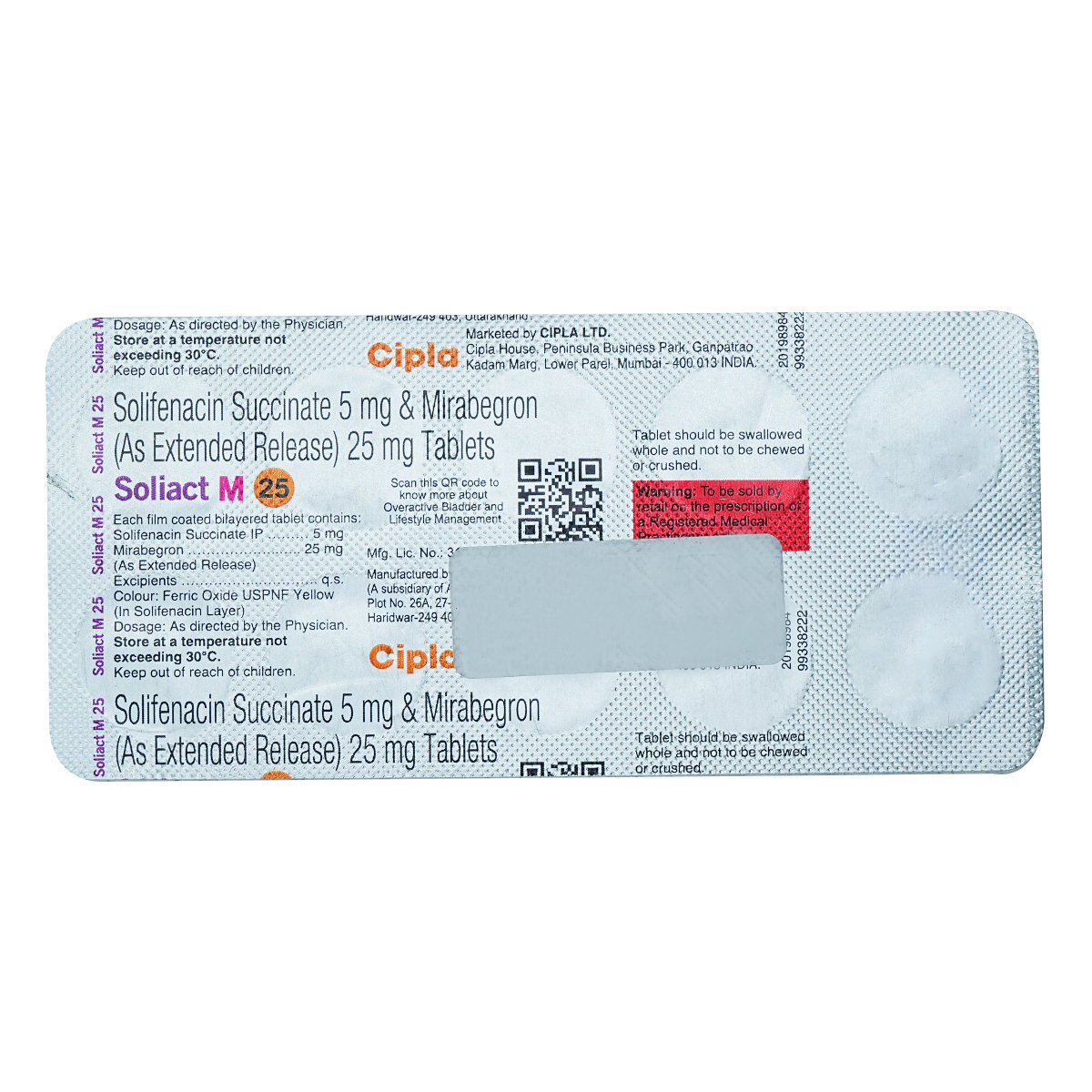
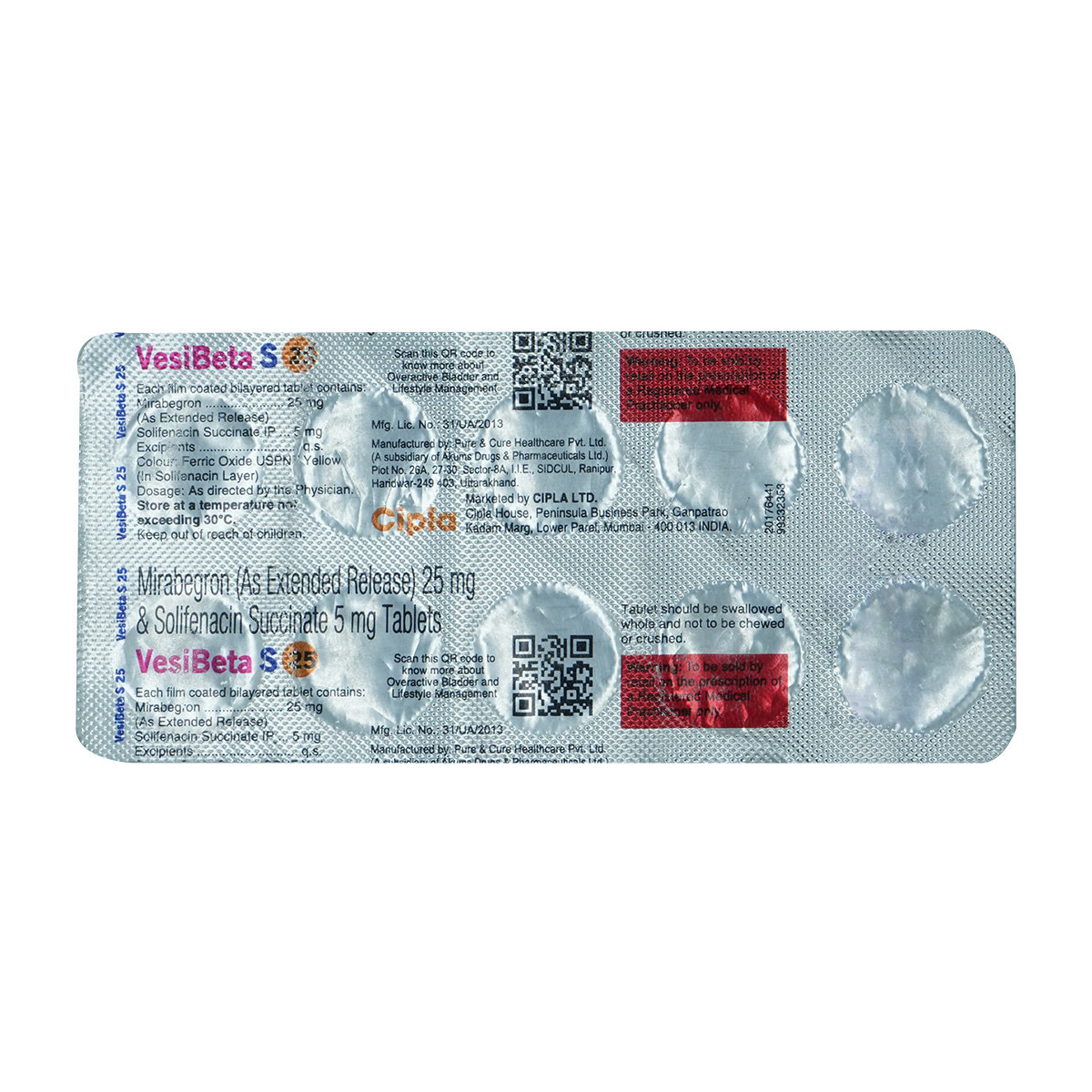
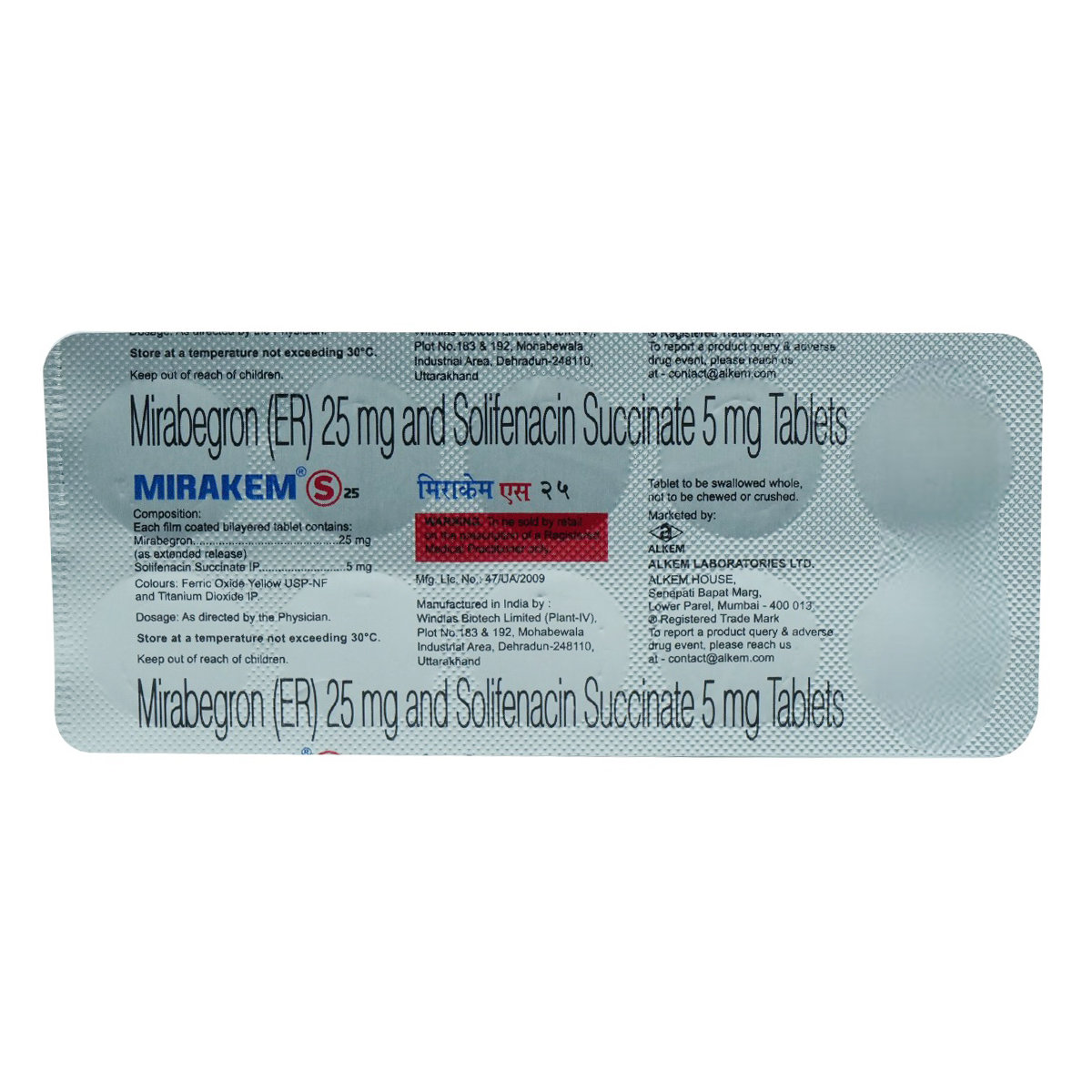
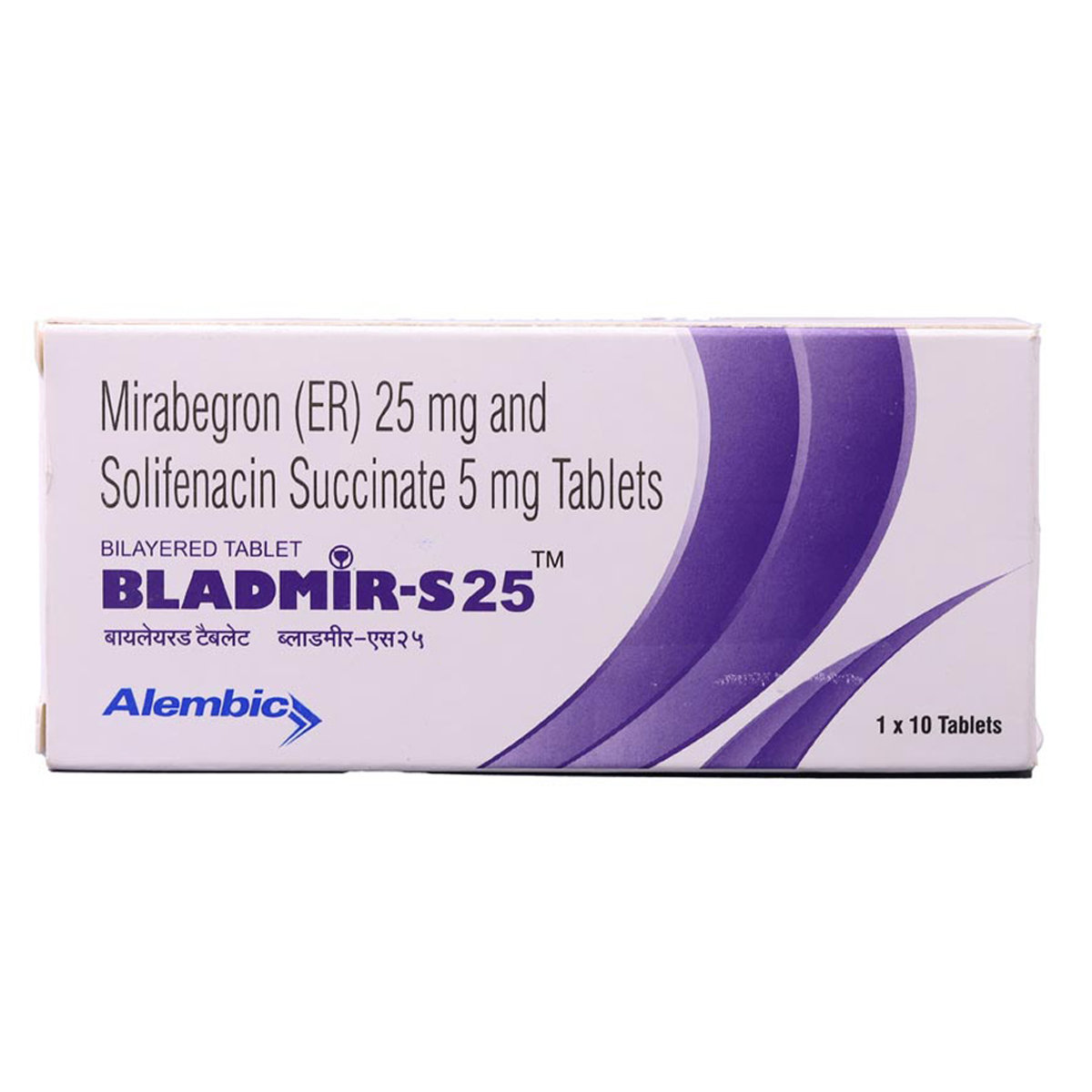
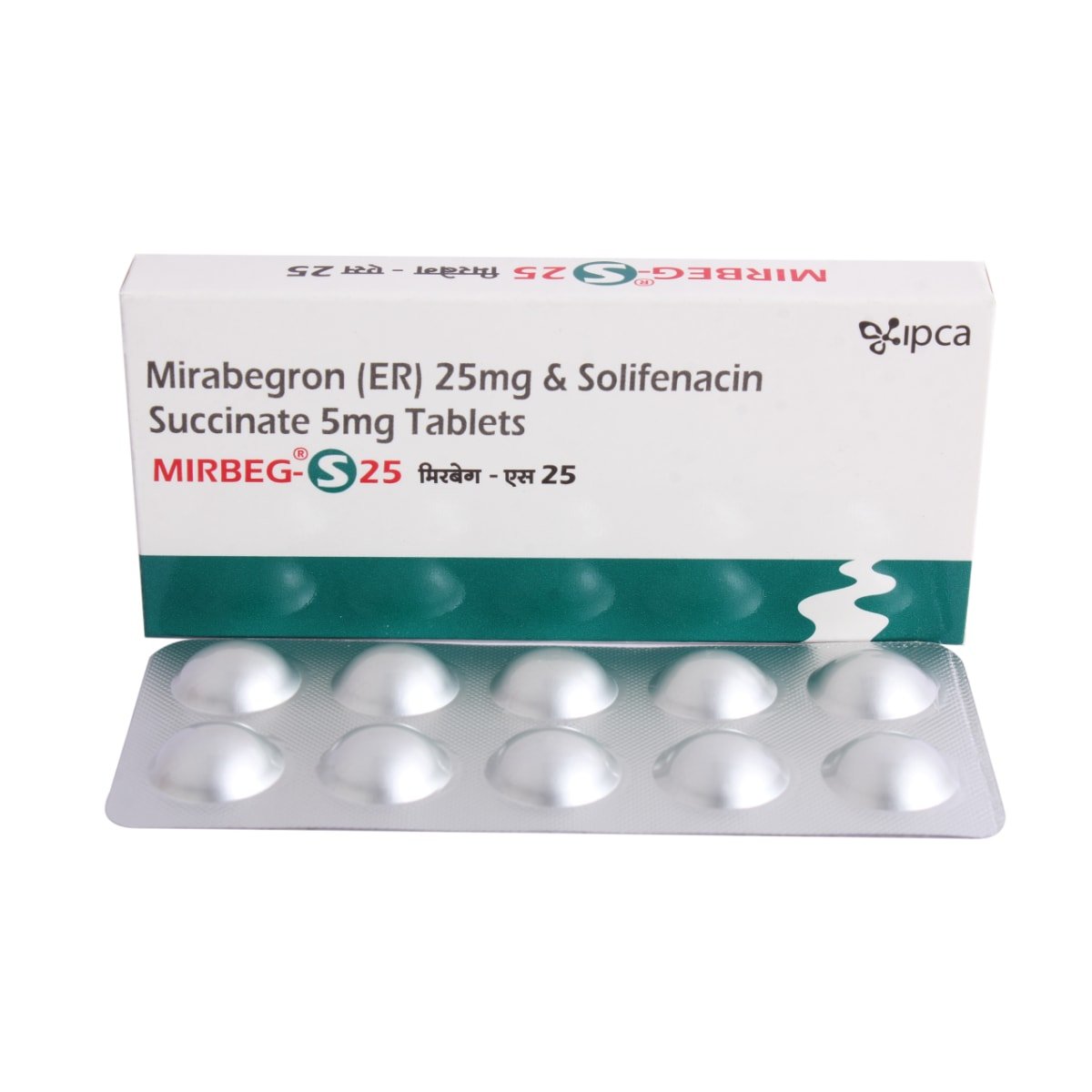
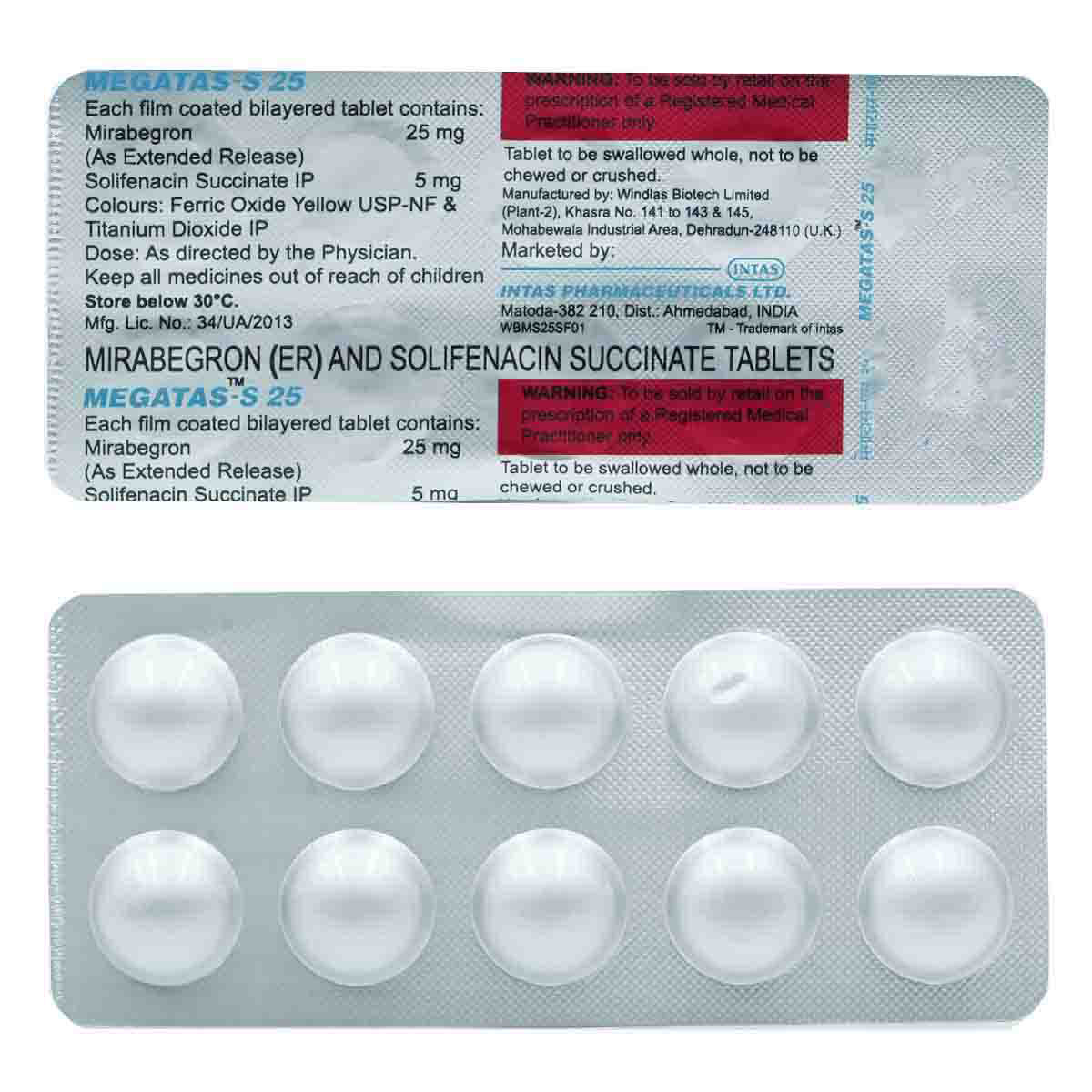
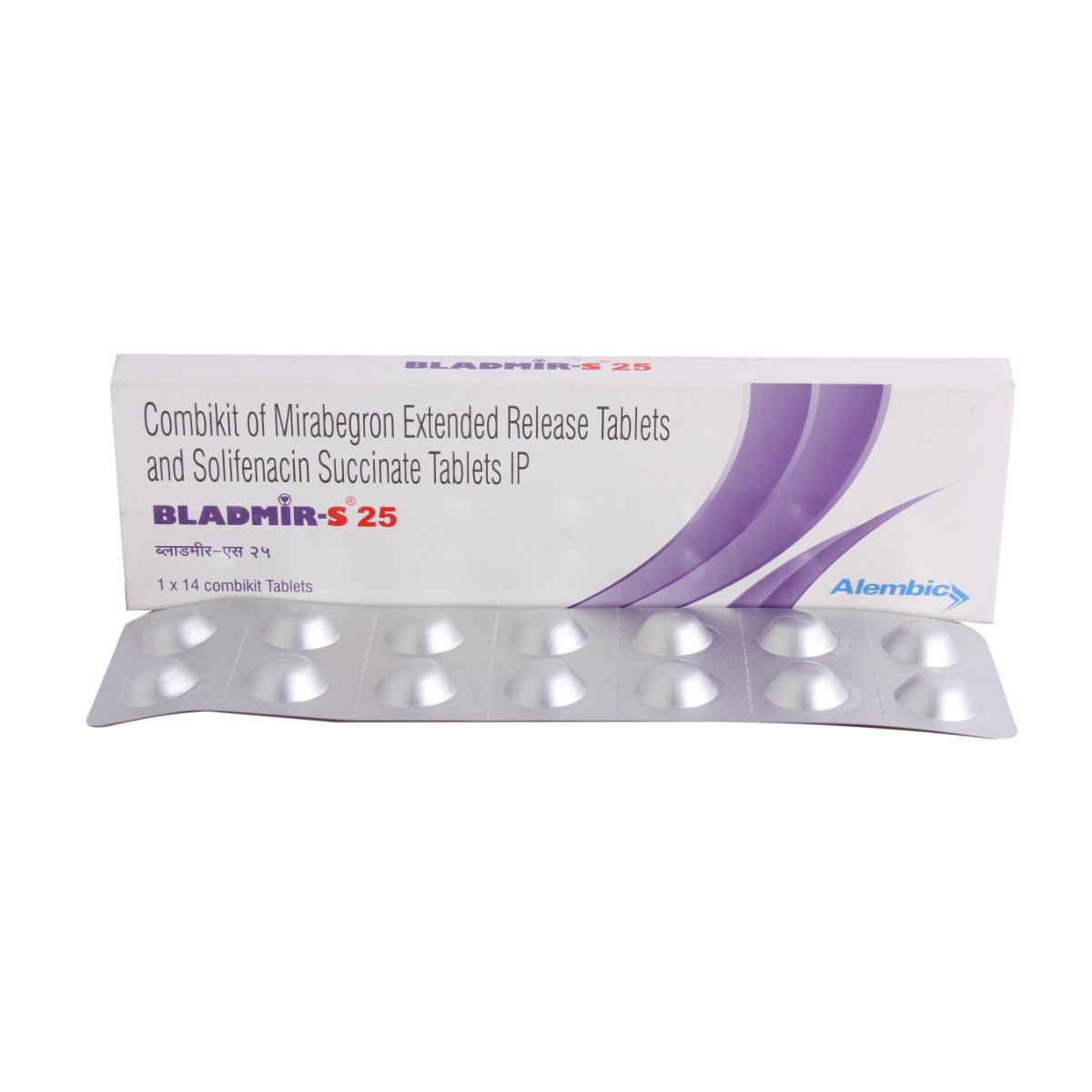


_0.jpg?tr=q-85)

